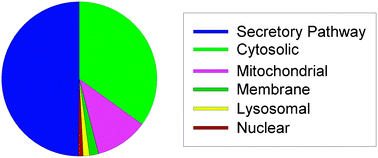Analysis of mouse brain peptides using mass spectrometry-based peptidomics: implications for novel functions ranging from non-classical neuropeptides to microproteins†‡
Abstract

* Corresponding authors
a
Department of Molecular Pharmacology, Albert Einstein College of Medicine, 1300 Morris Park Ave, Bronx, USA
E-mail:
lloyd.fricker@einstein.yu.edu
Fax: +1 718-430-8922
Tel: +1 718-430-4225

 Please wait while we load your content...
Something went wrong. Try again?
Please wait while we load your content...
Something went wrong. Try again?
L. D. Fricker, Mol. BioSyst., 2010, 6, 1355 DOI: 10.1039/C003317K
To request permission to reproduce material from this article, please go to the Copyright Clearance Center request page.
If you are an author contributing to an RSC publication, you do not need to request permission provided correct acknowledgement is given.
If you are the author of this article, you do not need to request permission to reproduce figures and diagrams provided correct acknowledgement is given. If you want to reproduce the whole article in a third-party publication (excluding your thesis/dissertation for which permission is not required) please go to the Copyright Clearance Center request page.
Read more about how to correctly acknowledge RSC content.
 Fetching data from CrossRef.
Fetching data from CrossRef.
This may take some time to load.
Loading related content
